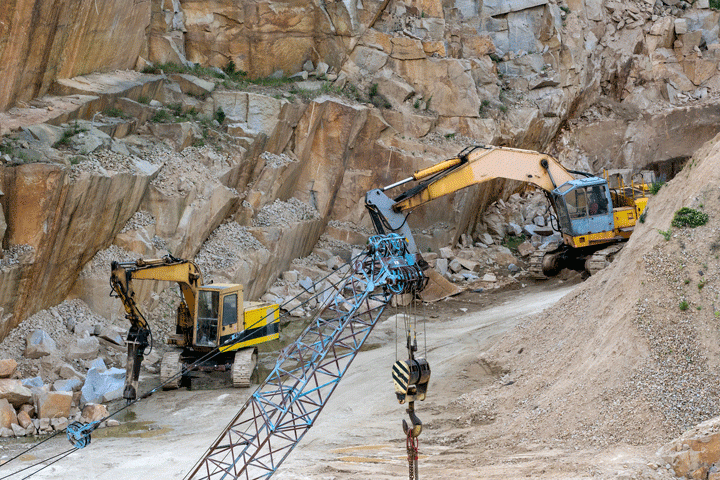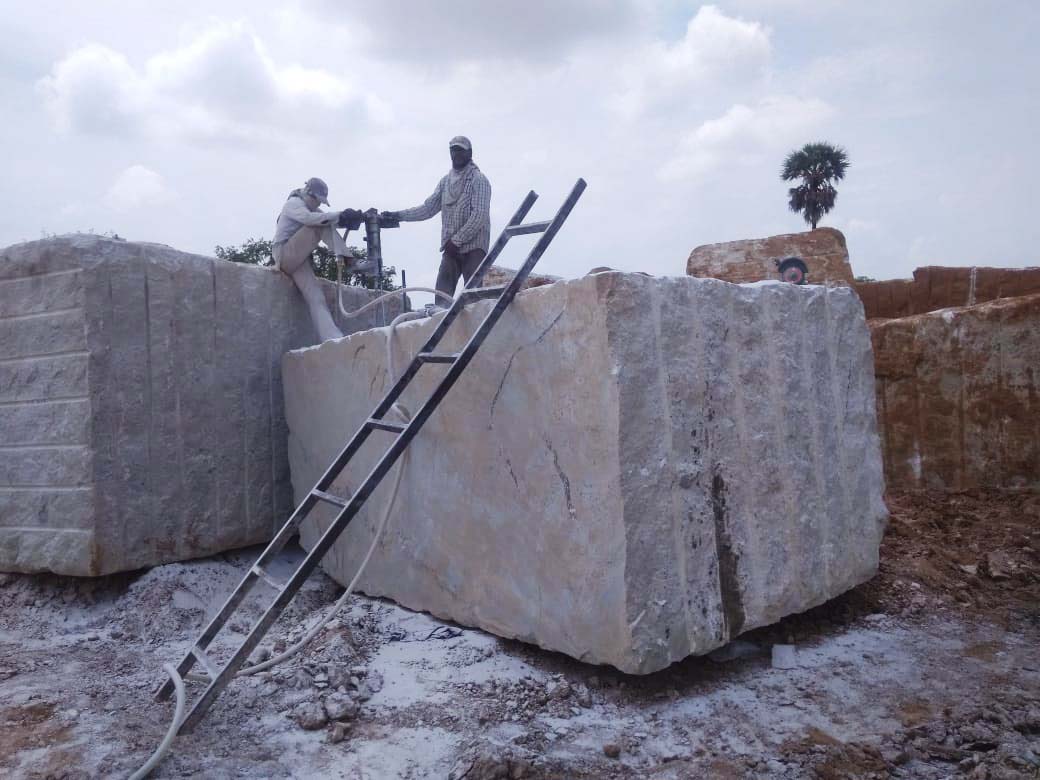Releasing the Appeal and Durability of Granite Quarry: A Journey With Time
Granite quarries stand as testimonies to both the geological marvels of our planet and the enduring craftsmanship of humanity. The journey with time that granite quarrying represents is a compelling narrative of advancement, willpower, and the detailed dancing in between nature and sector. Recognizing the beginnings of this old-time technique, the advancement of strategies and devices used, and the modern value of granite quarrying introduces a tapestry abundant in background and significance. As we peel off back the layers of time and dig into the elaborate world of granite quarrying, we uncover a story that not only showcases the beauty and durability of this magnificent stone yet additionally loses light on the extensive effect it has carried human beings previous and existing.

The Origins of Granite Quarrying
In the record of history, the origins of granite quarrying can be mapped back to ancient worlds where the pursuit for sturdy structure products fueled the appearance of this ageless craft. From the impressive structures of ancient Egypt to the grand holy places of Greece, granite has actually been prized for its strength, charm, and durability. The Egyptians, with their innovative quarrying techniques, were among the first to draw out granite widespread, utilizing it to create monumental pyramids and elaborate sculptures that have stood up to the examination of time.
As human beings evolved, so did the methods of quarrying granite. The Romans even more fine-tuned the methods, establishing tools and machinery to essence and transport granite over large distances for their architectural jobs. The sturdiness and aesthetic charm of granite made it a valued material for cathedrals, monuments, and sculptures throughout the ages.
Today, the legacy of ancient quarrying practices lives on, with modern-day innovation boosting effectiveness while still paying tribute to the craftsmanship of our ancestors. The origins of granite quarrying offer as a testimony to human resourcefulness and the enduring allure of this noble rock.
Devices and Methods of Quarrying
Quarrying granite requires specific equipment to draw out the rock from the earth successfully and with precision. Modern quarries use diamond-wire saws, high-powered drills, and explosives to break apart the granite in a regulated manner.
In enhancement to advanced machinery, typical hand tools are still utilized in specific quarrying procedures to guarantee fragile accuracy in extracting the rock. Chisels, hammers, and wedges are used by experienced quarry employees to different granite blocks along natural cracks, a strategy that has been passed down via generations.
Furthermore, methods such as piercing upright and straight holes for placing plumes and wedges, along with the regulated use dynamites in calculated areas, enable quarry workers to draw out granite effectively while maintaining the honesty of the stone. The harmony between contemporary technology and standard workmanship is key to the sustainable quarrying of granite for generations to come.
Evolution of Granite Quarries
The change of granite quarries gradually discloses an interesting story of technological improvement and market development. From ancient times where hands-on tools like knives and hammers were utilized to draw out granite blocks, to the industrial transformation introducing steam-powered machinery for faster quarrying, the development of granite quarries has actually been noted by substantial advancements. In recent decades, the introduction of ruby wire saws and advanced drilling technologies has revolutionized the removal procedure, permitting extra exact cuts and minimized waste of basic material.

Granite Quarrying in Modern Times
The progression of granite quarrying techniques from historical reliance on manual devices to the cutting-edge methods of modern times underscores a remarkable journey of technical technology and sustainability techniques within the sector. In modern granite quarrying, progressed machinery such as diamond wire saws, high-capacity excavators, and computerized drilling equipment have actually changed Look At This the removal process. These tools enhance efficiency, accuracy, and safety and security, enabling larger quantities of granite to be extracted in a much shorter duration compared to traditional methods.
In addition, modern-day quarrying methods prioritize sustainability and ecological stewardship - granite quarries in south africa. Firms are progressively adopting eco-friendly strategies like water reusing systems, dust reductions innovations, and rehabilitation plans for worn down quarries. These efforts aim to decrease the environmental impact of granite removal, conserve natural deposits, and restore quarried landscapes to their initial state
Additionally, the combination of electronic technologies like drones, general practitioner tracking, and 3D modeling has enabled quarry operators to optimize procedures, improve decision-making, and ensure the lasting management of sources. By embracing advancement advice and sustainability, the granite quarrying industry in modern-day times remains to grow while supporting ecological responsibility.

Maintaining and Protecting Granite Quarries
Amidst the developing landscape of granite quarrying methods, conservation and security of these useful all-natural websites have actually come to be extremely important problems for sector stakeholders and ecological supporters alike. As granite quarries remain to be an essential resource of this desirable rock, it is important to take on lasting approaches that guarantee their durability and secure surrounding communities.
Protecting granite quarries involves implementing effective recovery strategies to bring back the land post-extraction. granite quarries in south africa. This procedure consists of reshaping the terrain, replanting indigenous plants, and producing habitats for wildlife to grow. By recovering quarries to their natural state, the environmental influence can be decreased, and the appeal of these landscapes can withstand for future generations to appreciate
In addition, securing granite quarries needs enforcing laws that regulate accountable quarrying practices. This consists of tracking water top quality, review managing dust exhausts, and handling noise degrees to reduce disruptions to the atmosphere and nearby areas. Collaborative initiatives between sector players, governmental bodies, and preservation groups are essential in promoting these requirements and ensuring the lasting use granite quarries.
Final Thought
To conclude, the trip through time in granite quarrying exposes the origins, tools, strategies, and development of this technique. The contemporary period has brought improvements in quarrying techniques, allowing the conservation and security of these beneficial natural sources. It is very important to continue to promote sustainable methods to make certain the charm and longevity of granite quarries for future generations to appreciate.